What is content curation? How to use content curation to increase your credibility and exposure in your industry? Find out here.
Learn how to use content curation to increase your brand credibility and exposure.
Content curation definition: it is the process of gathering and sharing quality content with your audience.
Undeniably, it’s becoming widely used because it’s one of the fastest ways to build an audience online.
To give you a clear perspective here’s the number of people online in the world:

You hear them right; more than half of the world’s population is currently online! That’s an excellent opportunity for you to expand your audience online.
In just today, there are already more than 208 trillion emails sent, 5 billion blog posts written, and 623 billion tweets.
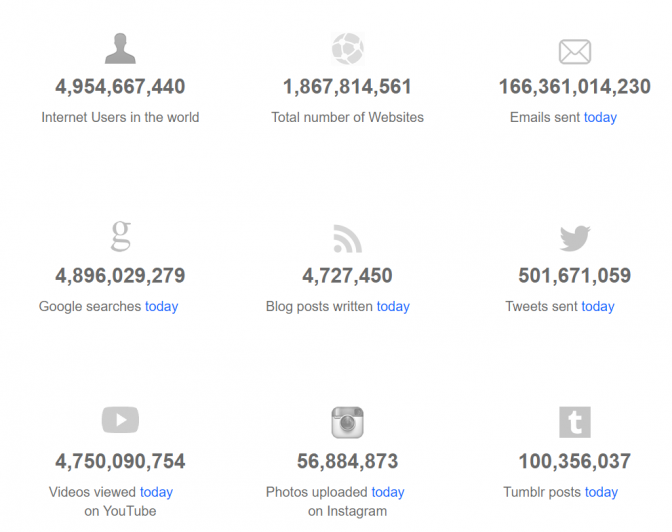
Each year the number of content on the internet is growing, and 2021 will be no different.
The best news of all is that ANYONE can create content.
In most cases, they take a lot of work, time, and effort – especially when you are planning to create content from scratch. That’s where content curation comes in.
Today, I’m going to show you exactly how to curate content the best way to grow your brand.
Content Curation vs. Content Creation
Before we go into the details, let’s look at how content curation is different from content creation.
Though these two concepts involve creating content, they are not the same.
Content curation involves collecting content created by others and giving it a new context or adding your personal touches. In contrast, content creation is creating fresh content.
Content creation is more effective than content curation, but it costs you more money and time to create.
Together, they make a great combination that can help you get the results you want, boosting your brand visibility or awareness. That’s why you need a balance between content creation and curation.
Why is content curation important?
Here’s why content curation is important in your content marketing strategy.
Saves your time and energy.
Have you ever tried to write content for a website from scratch? You sure do.
I’ve created blog posts from 2,000 words on up to over 5,000 words.
And no joke, writing everything from scratch is not only time-consuming but also expensive.
On the other hand, content curation will almost always include some creation, albeit far less time required than creation.
Recognition as an expert
Curating high-quality and relevant content will help to increase your credibility amongst your target audiences.
When people get value from your content, they gain trust and recognize you as someone who knows what they are doing.
Improve your online presence
By actively sharing your content on social media or websites, you can enhance your online presence, increase your brand growth, and attract more sales.
It also helps your potential customers to find your brand before they are aware of your existence.
Helps expand your network
When people are happy with the information you send them, they can share it around with others.
In doing so, they help market you or your brand. So, as you help others, they also help you. As a result, you get connected to more customers and influencers in your business sector.
How to curate content?
Now, I’ll share with you the six effective strategies for creating effective curated content.
1. Always place audience interest first
You cannot do content curation for the sake of it. There must be a good reason why.
Before you curate content, you need to ask yourself:
What type of content does your audience prefer?
It helps you identify the type of content you should curate more to attract their attention.
But how do you know which topic they are interested in?
Easy. Look at your audience; they have all the answers that you need. Check the keywords or phrases that your audiences used to find your product or service.
You can use Rank Intelligence to find all the keywords that your website is already ranking for.
First, enter your website URL into Rank Intelligence. Then, select the country where the audience is based.
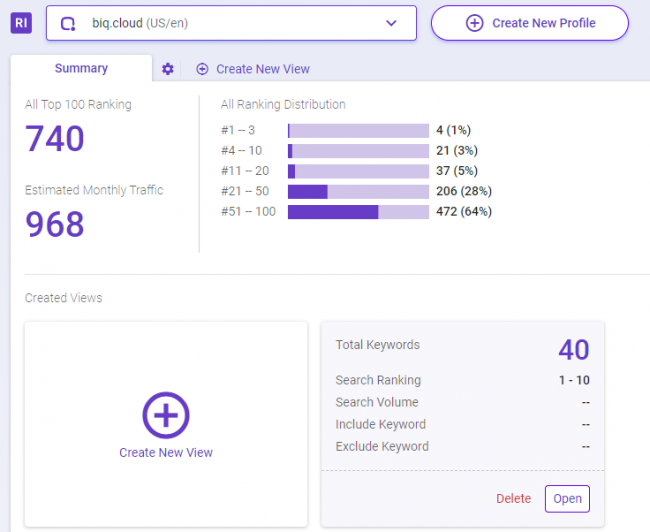
You will get to see all the keywords your website is ranking for together with the important insights such as search volume, cost-per-click, and competition, and so on.
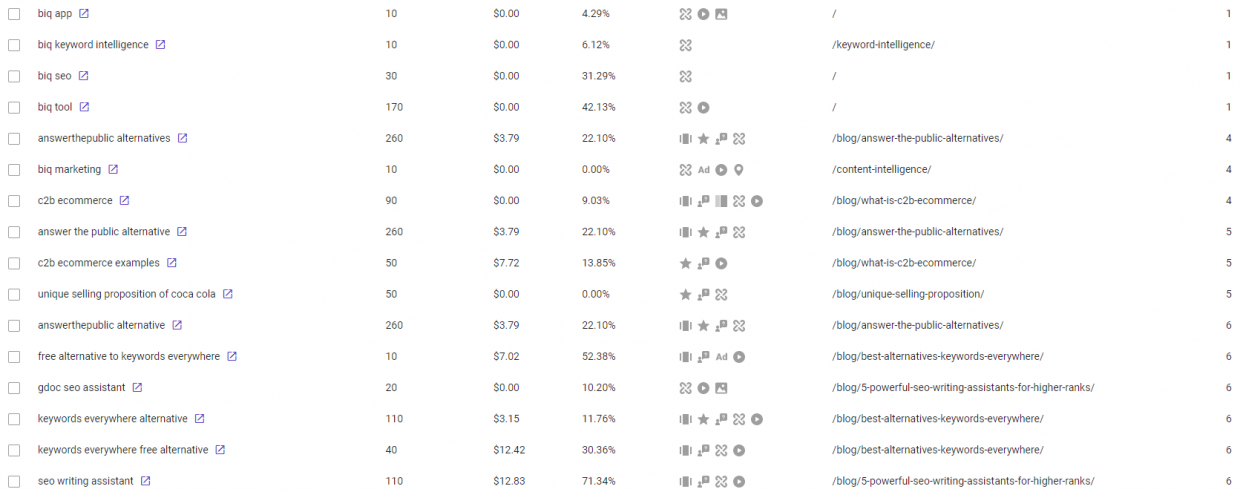
These insights let you know the keywords or phrases your audience is searching to reach your website.
With this information, you will know not just what topics you should curate more, but also what content you should create more. Curate content that will enlighten your audience and answer their questions.
You need to make sure you are curating content that will resonate with your audience.
Here is one of the many curated content examples; GoPro curated and posted its users’ photos and videos on its Instagram. It lets their audiences that have the same interests to see others’ experiences using the versatile camera.
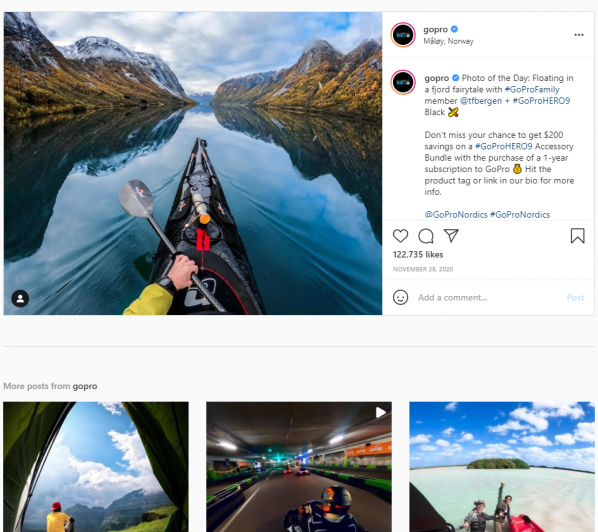
Sharing such content allows your audience to see how others use your product or service and boost your brand awareness and engagement.
Just look at the number of likes for that post. There are more than 100,000 who reacted to that post alone!
If you are actively using social media to communicate with your audiences, you may utilize its analytic to check your audience’s interaction with your content.
For example, Instagram’s analytics allows you to see your audience demographics, when they’re online, and what type of content they like.
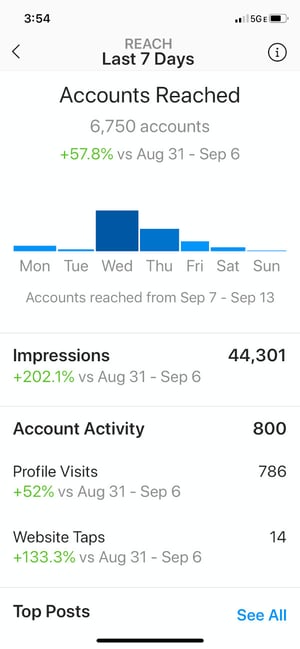
You can use the information to understand your audience better. Then, you can start curate content that answers their questions and post at the right time to get a maximum result.
2. Figure out the topics to cover
Now that you understand your audiences’ preferences, it’s time to figure out what topics you will curate.
It can be overwhelming to choose which content to curate due to the vast amount of information.
Fortunately, from the previous step, you already have ideas on what topics your audiences seek from you.
You may further expand them in Keyword Intelligence to see what are the trending topics related to your case.
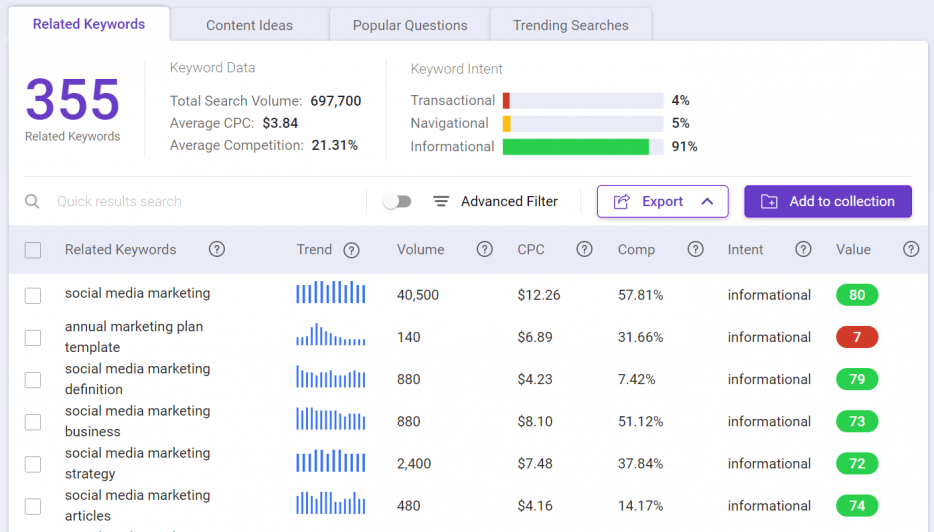
Trending searches show the latest keywords or topics around your selected keyword. It helps you discover what trending searches people are searching for online.
For example, Search Engine Journal leveraging on the trending Google algorithm update to create new content after adding their perspective.
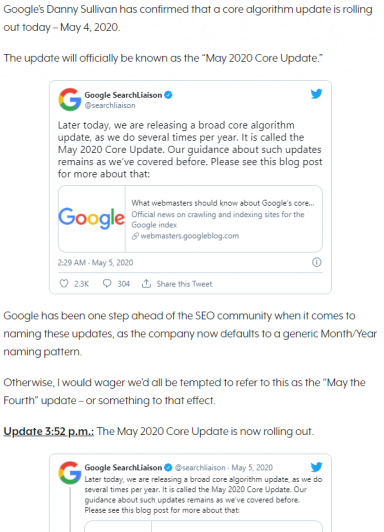
Switch over to Related Keywords, and you will see the keywords that are related to your topics.

Looking at related keywords gives you ideas on what related content you can curate.
For example, BiQ is an SEO suite that helps you improve your SEO and brand visibility. But we also found out that our audience is also interested in traffic generation. We decided to compile a list of the best traffic generation methods used by marketing experts and turned them into a blog post:
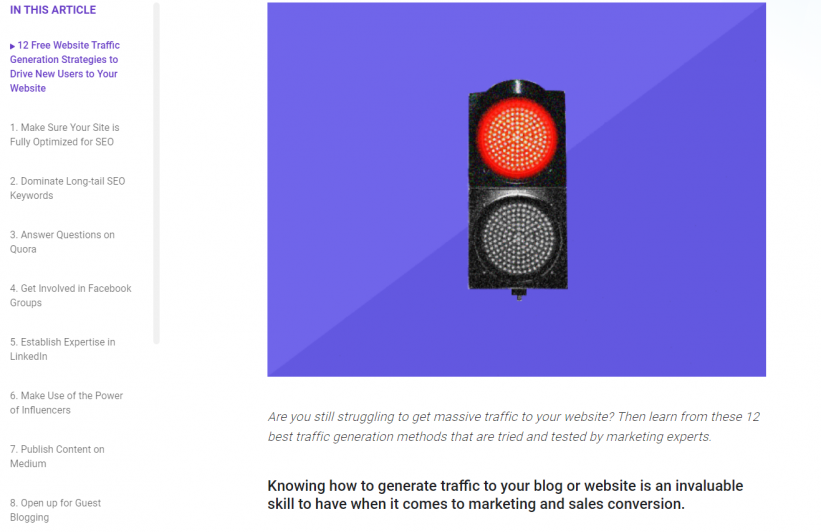
If you are looking for more inspiration, you can also check your competitors’ top-ranking pages using Rank Intelligence.

You can choose to curate their content or check out if they have curated content from other sources.
3. Pair quality with quantity
Curation helps you build your audience. When done correctly, you will have many people ready to share your content and spread the word for you.
The best part?
It’s free!
So you may be excited to curate more content.
But here’s the thing, more doesn’t mean better. When your content is irrelevant to your audience, your audience will start to despise your content, and you may be at the risk of losing their trust and support.
It’s essential to understand your audience’s needs and invest time in choosing which content you want to curate.
You need to ask yourself some questions:
- Does it match what they are looking for?
- Does the content able to solve my audience’s problem?
- Is the content useful and reliable?
- Are there enough data to support the content for further discussion?
If the answer to all the questions above is yes, then you may have found the next gem for your content curation.
You need to have good judgment or a strong eye toward quality content. Then, evaluate the content you want to curate to the audience’s needs.
Once you are good at these, you need to decide how much content you want to curate.
I’d like to be honest with you. There is no right or wrong ratio to how much content you should curate versus other content types you should create.
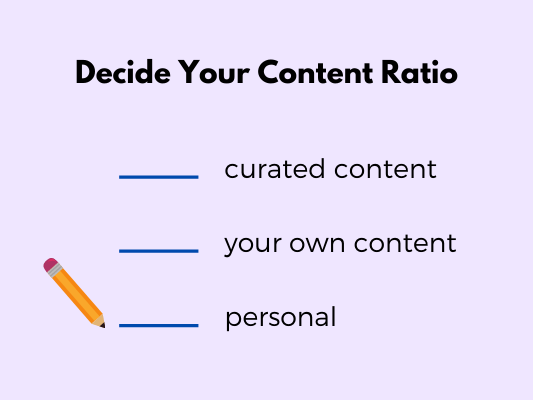
But I found some excellent ratios that others have come up with, and you may want to give it a try.
Here you go…
5:3:2 Content Sharing Ratio
TA McCann recommends the content sharing ratio. Here is the breakdown:
- 5 should be the curated content
- 3 should be your original content
- 2 should be your status updates
30:60:10 Golden Ratio
The golden ratio was introduced by Rallyverse, which is based on data from their customers on how they were using social and content marketing. So this ratio may be very much useful when you want to curate content for social media.
- 60% curated
- 30% owned
- 10% promotional
You can use the ratio to guide you in determining how many curated contents you should post daily or weekly, but keep in mind that they are not universal. So try it out and alter it until you found your own ‘golden ratio.’
4. Provide your personal take
Simply resharing Facebook posts without your take doesn’t bring much value to your audience. They want to know what your view is towards the content.
Whether it’s just a quote or image, you should always give your take on the curated content.
Your curated content should illustrate to your audience that you care about them. It should also show the value you are giving to your audience. Ensure your content is easy to read and understand and answer all your audiences’ questions.
Don’t just repeat what’s the content is about but present them in a meaningful way to add more value to your audience.
Ask yourself this: “Why is this content important?”
Doing so will not only do good for your audience, but it will also reciprocate to your brand. It will enable you to become a thought leader within your industry if you can produce high-quality curated content.
5. Add calls to action
A little promotion about yourself won’t hurt.
After all, you aren’t sharing all this valuable content for anything. Are you?
Let people know who you are and what you’re up to. It could help you make massive sales or benefit from other things like great connections.
Ensure your content has calls to action, where you direct them to do what you want. It could be downloading an ebook, signing up for a free tool, or sharing your content.
Adding calls to action encourages your audience to perform some action in response to consuming your content. After all, they would be more than happy to do it, provided that your content is answering their search intent.
You may quickly identify the search intent using Keyword Intelligence.
Let’s say you want to know the searcher’s intent when searching for ‘content marketing.’ Type them into the keyword tool.
It will show you the estimated keyword intent percentages based on the total number of related keywords.

The keyword has an informational intent from the example above, which means the searchers are in the awareness stages.
Since the searchers are looking for more information, you can create informational content such as ‘why do you need content marketing?’ and ‘top content marketing examples’.
Scroll down, and you’ll be able to identify each keyword intent so that you can understand your target audience better.
That is a great help because it eliminates assumptions and guesswork to identify the searchers’ intent.
With that information, you can create content that can better match your audience’s needs.
6. Give credit to the original source
Content curation is all about sharing. Certainly not stealing. So obviously, you need to give credit where the credit is due.
Giving credit to the original resources you use not only helps you to avoid any form of plagiarism, but it will also enhance your credibility.
Furthermore, this may result in a new relationship because the original creator may be willing to share your content with their audiences.
So the next time you want to curate content, reach out to the original creator and let them know your intention. It may result in a win-win situation!
Conclusion
Content curation is one of the great strategies for successful content marketing.
If you do it right, your content will be gaining traction in no time.
Using the strategies in this guide, you should able to curate content quickly. Start with understanding your audience, knowing what to curate, and keep analyzing your results.
Just make sure that you don’t rely entirely on curated content as the only means of communicating with your audience.
You might still need to prioritize creating content and create a balance for both.
Check out this other article on how you can create your best SEO content: The Ultimate Guide To SEO Content.
How do you curate content? Do you have any other tips on how to curate content? Let me know in the comments below!




